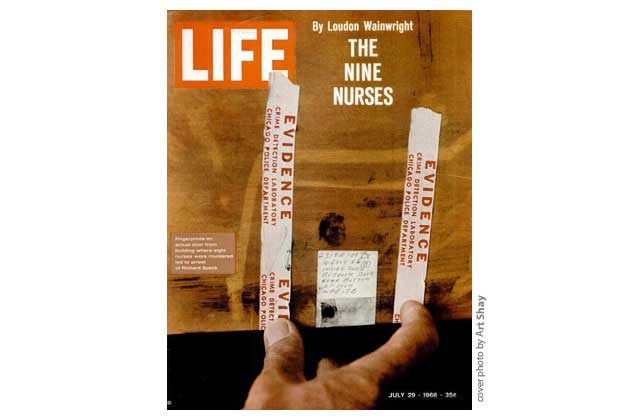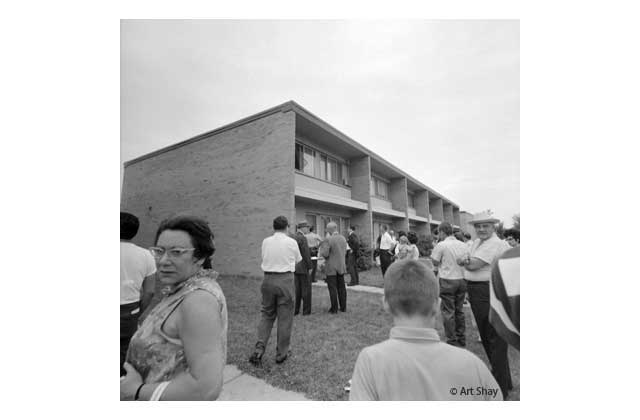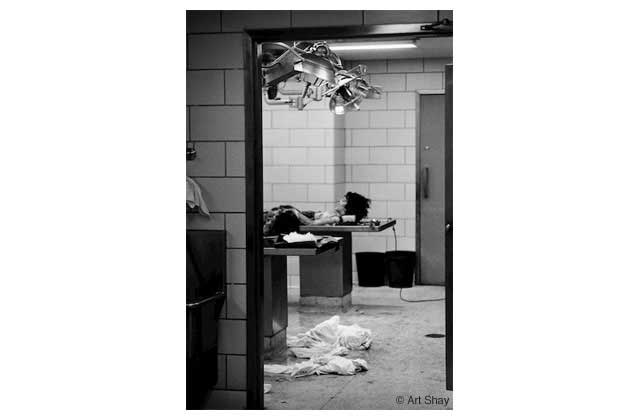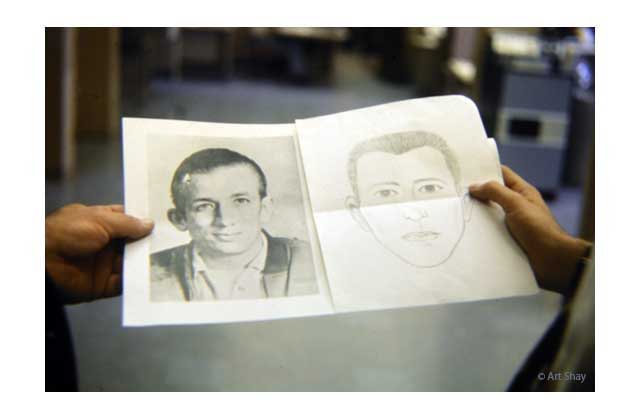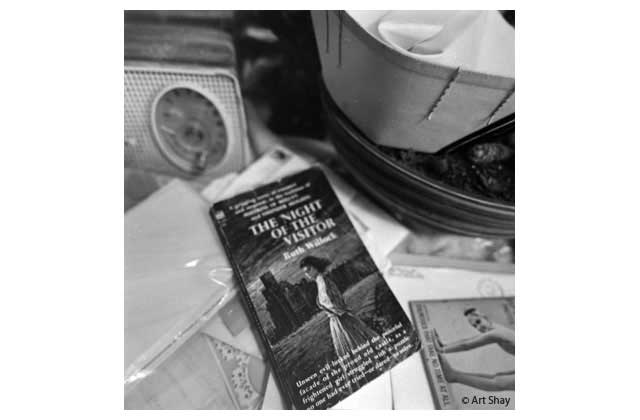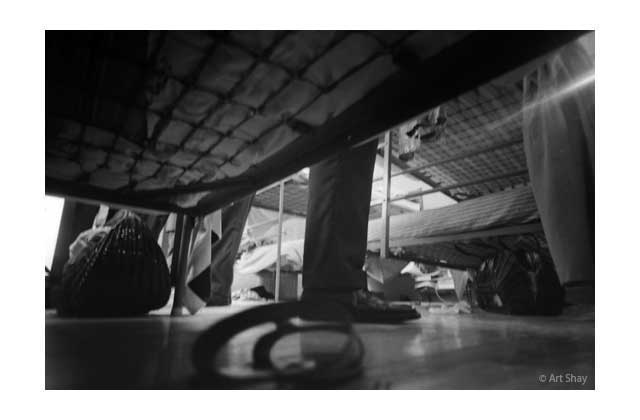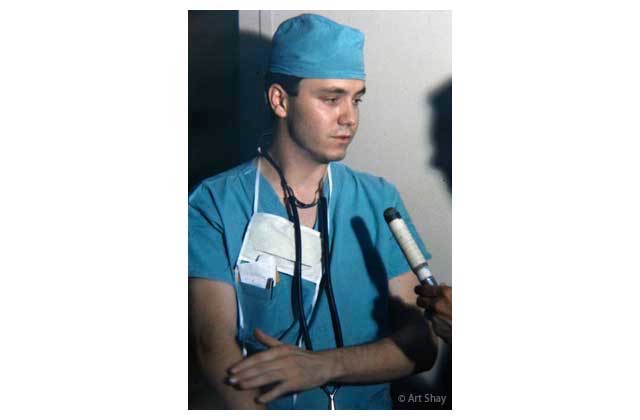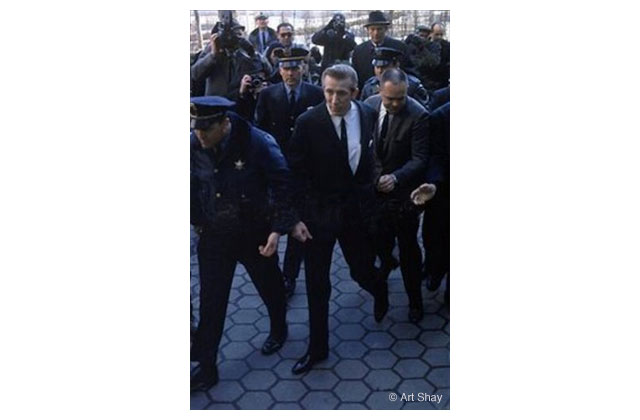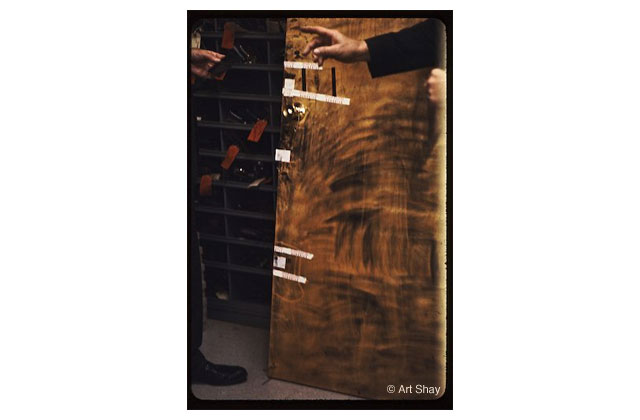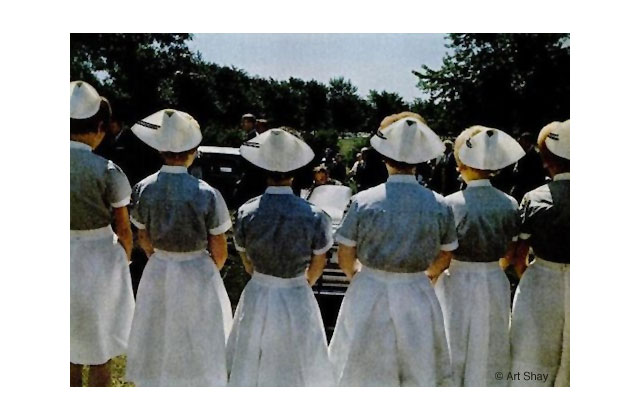From The Vault Of Art Shay: Remembering The Richard Speck Case
By Art Shay in News on Apr 11, 2012 6:00PM
(Legendary Chicago-based photographer Art Shay has taken photos of kings, queens, celebrities and the common man in a 60-year career. In this week's look at his archives, Art shares his memories covering the Richard Speck murders.)
The intersection of fiction for fun and killing for real surfaced a few nights ago in an intriguing episode of Mad Men, and is the reason for the resurrection of my own role as the first Life photographer on the scene of the Richard Speck murders.
I had talked and bribed my way into the house after the forensic crew left. I had a new 140-degree Widelux camera that I wanted to try out to get the view that the one nurse, Corazon Amurao—who had escaped by hiding under a cot—had as she hid in terror from the carnage going on around her as Speck raped and murdered Gloria Davy, Patricia Matusek, Nina Jo Schmale (whose room sported a street sign with her name that she had stolen), Pamela Wilkening, Suzanne Farris, Mary Ann Jordan, Merlita Gargullo, and Valentina Pasion.
Amurao, terrified, stayed hidden until 6 a.m. when she climbed out of her northeast bedroom window onto the sill, screaming in Spanish, "They're all dead. All my friends are dead!"
My 140-degree pictures of what Corazon saw from under the sanctuary cot, exists in the Life files. I don't know if we can shake one loose by the time this post goes live. I picked a nurse's cap up from a quarter-inch slurry of blood on a bedroom floor and placed it on a cot, knowing Life's aversion to blood.
I remember being appalled, territoriality, when Chicago Daily News fotog John White, entering the murder scene as I finished shooting, stayed my hand from replacing the nurse's cap back into the blood. His picture won him the award for Photographer of the Year.
We would joke about it, eventually. I did get the cover: a grab shot at the DA's office of one of the bedroom doors being carried to he lab. The cover became Life's all-time best seller until, a few weeks later, another photographer, shooting the University of Texas tower murder, framed the berserk killer's perch through a bullet hole in a phone booth half a mile away. I was sent there and tried, but couldn't, improve on the shot. My profession used to be like big league golf. (Poor Tiger.)
Solving a murder in which the killer is still on the prowl, especially drunken, drugged, armed with, apparently, a 17-inch knife, still angry, makes the cops and reporters— paparazzi in the time before the paparazzi—nakedly territorial.
Life Magazine was a big deal in those days: analogous to 60 Minutes. (We did the Mike Wallace ambush charade years before he did!) Leathery cops heading the search had let me hang with them, drive in their unmarked Ford four door, and listen to the ping-pong clatter of their exciting legal killer talk.
The one I'll call Ernie showed me his ankle gun at one of the eight bars we entered that night. "The fucker turns a hair, I splatter 'im." His partner in crime I'll call Hank, nodded. He had a Glock upsleeve of his gleaming Colt. I had two Leicas and a Nikon and was scared shitless I'd be shot dead by suspects Algren had labelled from the beginning, guilty of "mopery with intent to creep- a police corpse in the making."
The previous morning, a drifter named Claude Lunsfor had identified Richard Speck as the creep who had had diddled, raped, strangled and shot eight young nurses in the easternmost townhouse of a complex at 2319 E. 100th street, 150 feet from the the National Maritime Union's beer-smelling hiring hall.
Before Speck was ID'ed by Dr. LeRoy Smith at the rachitic Starr Hotel and checked into Cook County Jail on July 29—Smith had read about Speck's "Born to Raise Hell" Tattoo—He had apparently tried halfheartedly to kill himself.
In memory I will never forget the ironies of the Speck case. The morning after my wandering with the cops out to kill or capture Speck there we were in the Lake Calumet harbor area, in the tough Pullman-Roseland-South Deering district, making bar after bar, rousing this denizen then that one, showing pictures of the 6-foot tall, slender murderer. Begging for clues. Ernie said, "He's close. Guy says he was here an hour ago with a drunken teenage." Hank said, "Yeah, I can smell the fucker."
Suddenly a radio call came in: Speck had been seen in the shadow of one of the big
cargo ships laying to in the harbor; tall, slim, in a white shirt, carousing with a bunch of
homosexuals who preyed on foreign sailors who dropped from the ships for blow jobs and picnic food. The signs were imminent—there, there, was a "picnic group".
The cops drew their guns. I readied my 250 exposure Nikon with the 80-250 mm lens to record the capture.
Suddenly there was "our man Speck". We captured him. I got the "collar".
Then he spoke. "Vas gibt neues," he said. He was not Speck at all, but a fuckin' German sailor all spent and picknicked out. Welcome to Chicago! Duh. Those infamous frames exist, too, in the Life files.
As it happened, by the time I got to shoot Speck as you see him, suited for court and cleaned up, a colleague who happened to be my dear friend, beautiful, social, Abra Rockefeller Prentice (married to my friend, Time reporter Jon Anderson at the time). Abra showed me her colorful Peoria file. I still kid her about referring to Peoria's many rackets as "racquets". Anderson told me It was his reporting triumph.
"I was in with the first wave of reporters, got all sorts of scene-setting details (names of books on night tables—Other Voices, Other Rooms by Truman Capote, notes from boyfriends, etc. then hid them in drawers or under the beds. Got my shoes drenched in blood. Made a map for V. Puglisi, the Time map guy.)
"Much praise from New York, but I was so shaken, I quit Time and went to work for Bernie Sahlins for a year to clear my brain. Then I went back into journalism with a vow never to cover a mass murder of young women again."
I didn't see the Mad Men episode, but I don't see how they can be more scared than I was. The overriding press read on the event: If the eight girls had rushed Speck they could've captured him. They couldn't imagine that this pervert drunk would kill them all one by one.
If you can't wait until this time every Wednesday to get your Art Shay fix, please check out the photographer's blog, which is updated regularly. Art Shay's book, Nelson Algren's Chicago, is also available at Amazon.
